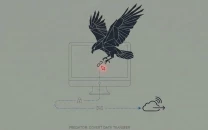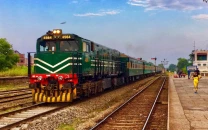Crisis delayed not solved
Pakistan’s stabilisation has begun, but without deep reforms, resilience, public trust, the next shock can break it

Amidst worldwide uncertainty, the economy of Pakistan tries a subtle balancing act. Following years of catastrophe, some signs point in the direction of stabilisation, however such advancements are tenuous. The very big question in the air now stands thus: can incremental advancements withstand shocks from the effect of floods, outside pressure and political volatility?
In fiscal year 2024-25, Pakistan's economy expanded by 2.7 per cent, up from the year earlier. Inflation, once deep into double digits, has moderated. The State Bank reduced its policy rate from 22 per cent from 11 per cent in the span of a year. Consumer inflation stands now in low single digits, bringing respite after an interval too long of spiralling prices. The current account has surged into surplus and a more stringent import regime.
Stabilisation for most Pakistanis is still an abstract concept. Food and petrol prices are still volatile. Farmers still have expensive inputs. Poor people still struggle with necessities. Perhaps low inflation may be in retreat, but it still hasn't delivered stability in daily existence. Like always, the fiscal deficit stoutly hangs in at some 6.7 per cent of GDP, and revenue realisation at only 12.5 per cent of GDP. Debt servicing devours close to half the federal revenue, limiting government expenditure.
Meanwhile, the country relies very heavily on outside assistance. In the latest staff level agreement with the IMF, the country managed to secure a disbursement of $1.2 billion from the IMF as part of an overall bailout package. The disbursement, however, comes with conditions: increased fiscal discipline, energy reform and tax reforms. The conditions, while designed with the aim for the longer-term reform, also threaten short-term suffering.
Foreign trade brings up one more point of worry. The trade deficit in goods increased sharply in mid-2025 up to a peak of 624 million dollars in August. Following the state of surplus for months caused by suppression of imports, such a reversal indicates structural imbalance.
In the face of such headwinds, the path ahead is not blind. The first priority is enlarging the economic activity base. The growth cannot be consumption or remittance driven. Industry and agriculture have to be reactivated. That implies logistics upgradation, correction of energy supply and provision of plain export sops. Special rehabilitation of the agrarian sector due to recent flood disasters is also urgently required.
Second, things have to get more expensive. The tax base is too narrow and unequal. Broadening the tax net, lowering exemptions and enhancing compliance are inevitable if Pakistan needs to pay for basic services and infrastructure.
Third, reforms have to protect the weak. Stabilisation should never come with a price tag of the poorest. Ehsaas-like programmes and targeted subsidies in energy should be retained and made more robust.
Fourth, resilience needs to become part of the planning core. Climate-related disasters are no longer occasional phenomena; they are regular characteristics of the economic profile in Pakistan. Infrastructure, flood defence, water infrastructure and disaster response capabilities should be viewed as essential parts of macroeconomic policy, and not secondary projects.
Lastly, communication works. People are more likely to sacrifice if they get the reason behind it. The government should tell citizens what it's doing, why it's doing it, and whom it's protecting. Restoring the confidence of the people will involve fairness and transparency. Stabilisation is in process, but thin ice.
Pakistan hasn't emerged from crisis. It stands in the shaky early recoveries. If this point in time is handled well, it can be the beginning of a more stable economy. If it's mismanaged, it can be missed again. What happens now determines the direction the story takes.














COMMENTS
Comments are moderated and generally will be posted if they are on-topic and not abusive.
For more information, please see our Comments FAQ